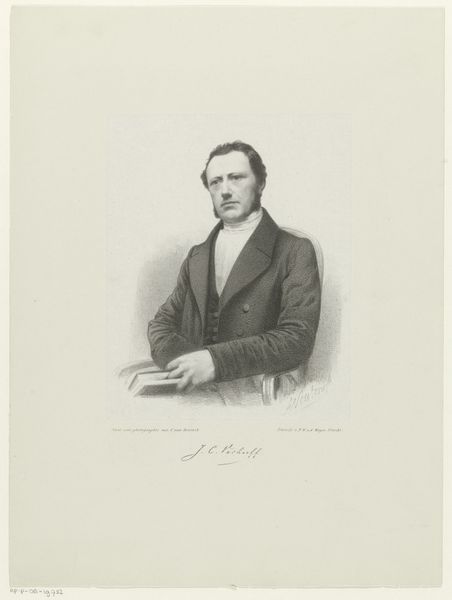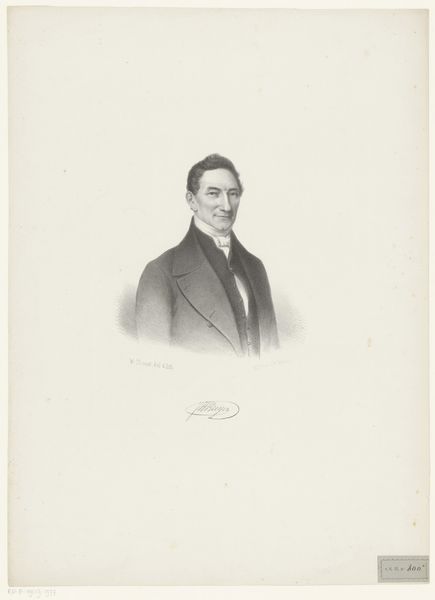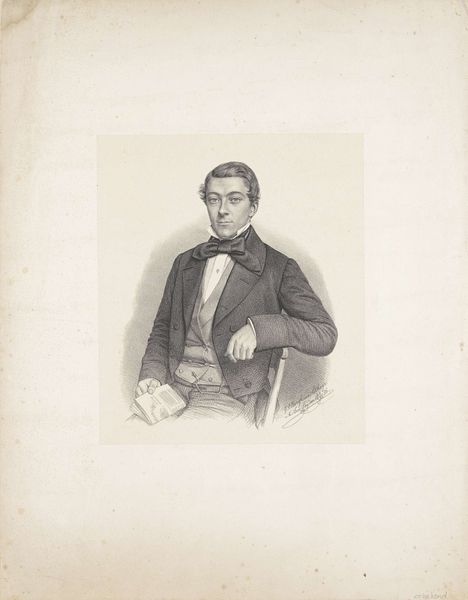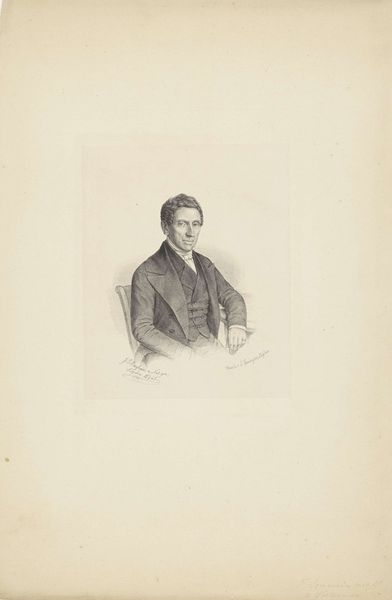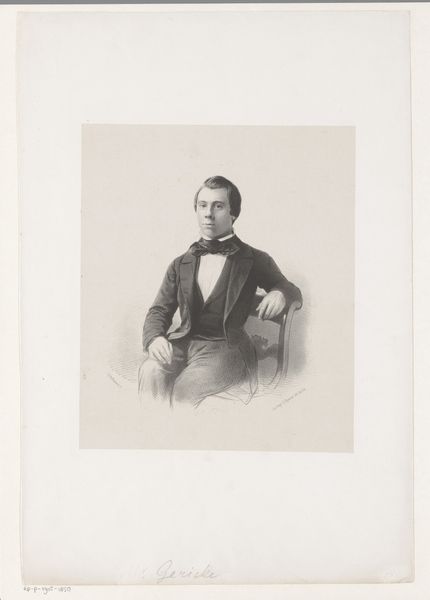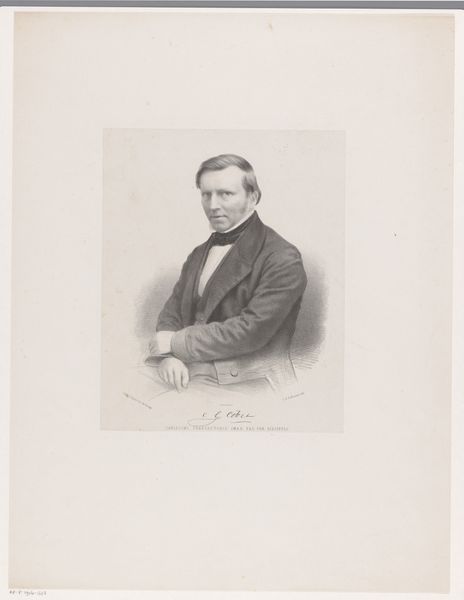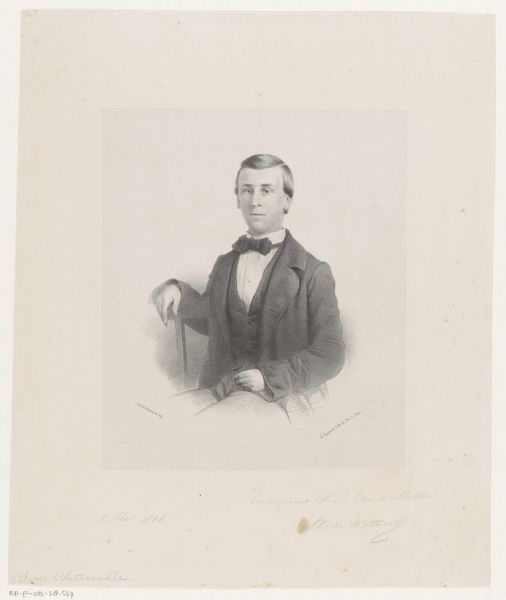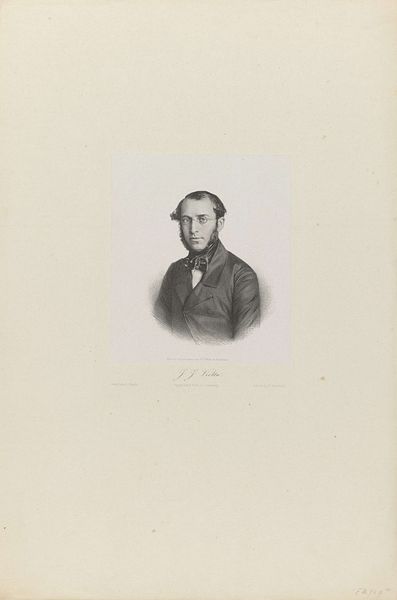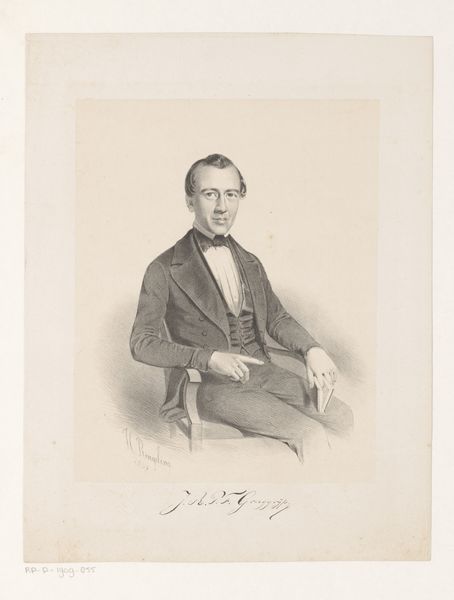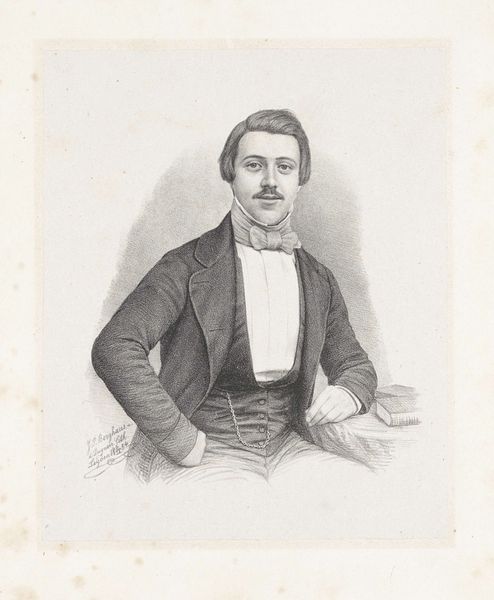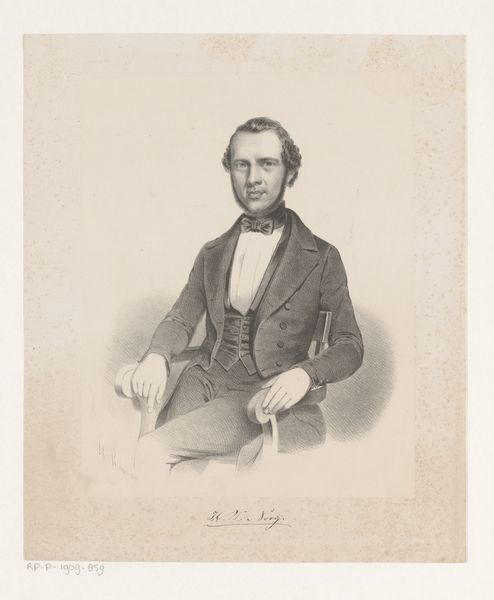
Dimensions: height 202 mm, width 138 mm
Copyright: Rijks Museum: Open Domain
Curator: This is a portrait of the Reverend Martinus Cohen Stuart, a pencil drawing executed sometime between 1834 and 1892, by Edouard Taurel. It resides here at the Rijksmuseum. Editor: The immediate feeling is one of reserved intellect. There's a softness to the pencil work that almost belies the subject's somewhat stern demeanor. His hands are neatly folded, giving an impression of composed thoughtfulness. Curator: Indeed. Taurel's positioning of Cohen Stuart is rather deliberate. Note how he's seated, but turned slightly towards the viewer. It's a common technique to engage the audience, a quiet invitation to consider him. We should also recall the power dynamics inherent in portraiture; it served to affirm status. Editor: Precisely, and while there’s a realism to the rendering of his features, it's arguably romanticized. Consider the gaze, the slight upwards tilt of his chin, there’s an attempt to project an air of authority and confidence in line with dominant ideals of masculinity. It’s fascinating to analyze the work in light of gender expectations in that era, particularly as they intersect with religious authority. Curator: Absolutely. And in 19th century Europe, depicting clergy held its own set of conventions. Here, the soft lighting accentuates the facial features, and while we don’t know the specifics of Cohen Stuart’s work, his status within religious circles surely shaped how he wanted to be seen and perceived. The relative simplicity of the backdrop and absence of obvious clerical symbols suggests a desire for a restrained projection of power, but it's still a performance. Editor: And what does that performance seek to achieve? It isn’t merely about individual ambition but perpetuating existing hierarchies. The control with which Cohen Stuart inhabits that social role reinforces structures of class and influence embedded within the church and its wider connections with politics and society. Curator: I think the technique Taurel employs enhances that. The softness, the tonal gradations…it's skillful but lacks any revolutionary intent. Rather, it perfectly captures a pillar of the community in a style deemed appropriate at the time. Editor: So, perhaps what strikes me most is not just the individual portrayed, but how the artistic conventions of the day contributed to solidify positions of authority, presenting individuals like Cohen Stuart as trustworthy and respectable, bolstering social order. Curator: An interesting lens indeed. It underlines how artistic expression always interacts within a specific social framework. Editor: Definitely, and in examining historical figures and how they're portrayed, we have opportunities to expose embedded power structures that influence even seemingly straightforward depictions.
Comments
No comments
Be the first to comment and join the conversation on the ultimate creative platform.
